Outreach in South LA Ramps Up With Prop 47 Grant
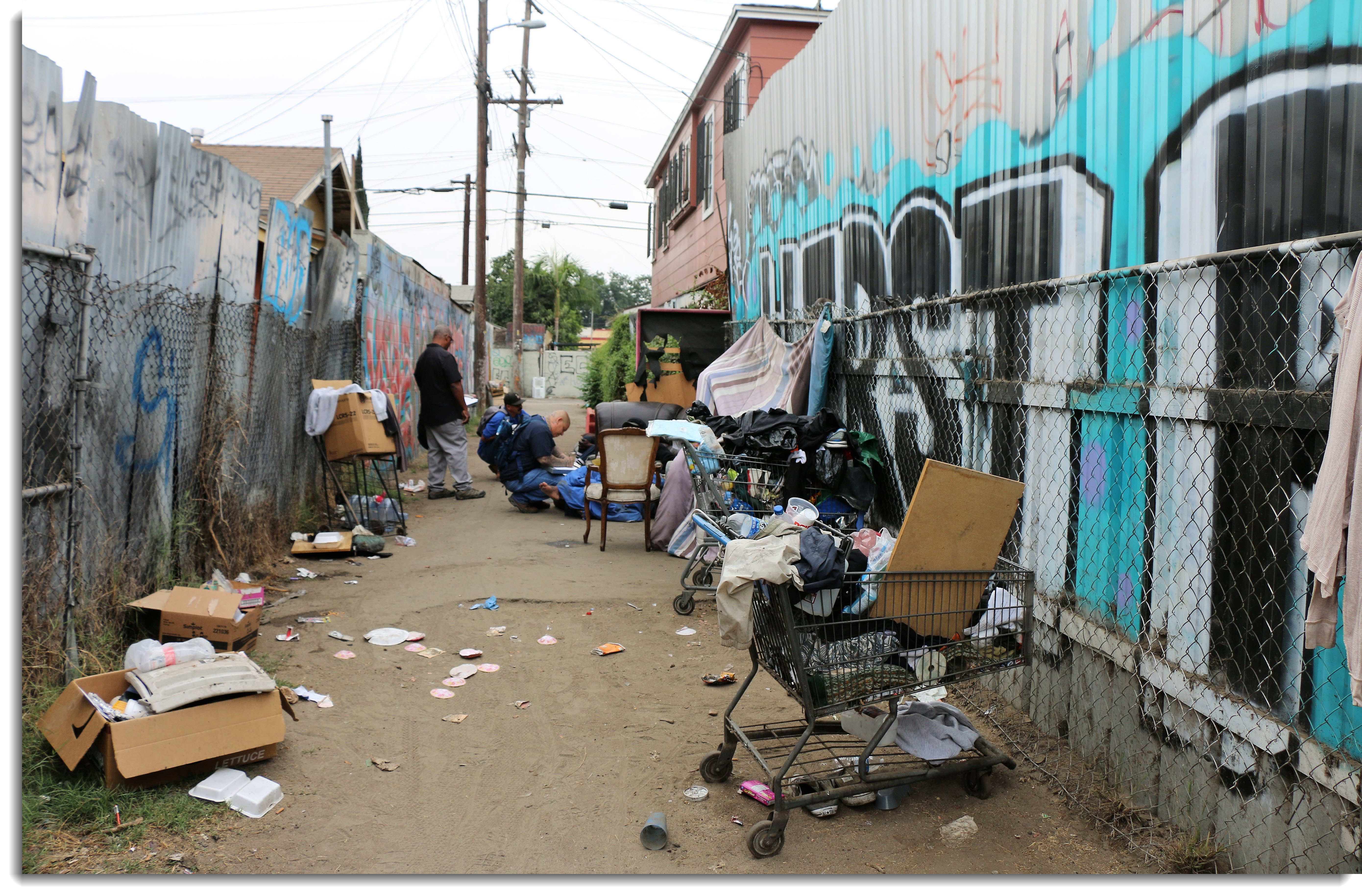
LOS ANGELES- The sun is barely up, the marine layer hovers, as the City Attorney’s Prop 47 team hits a growing homeless encampment in South Los Angeles. Peeking into tents and under tarps, the offer of a handshake, a bottle of water and a granola bar might be a life-changing moment for these people who are destitute, addicted and often physically and mentally struggling.
With a Proposition 47 grant from the BSCC, the city attorney has funded the 12-person L.A. Diversion Outreach and Opportunities for Recovery mobile team, which is run by the nonprofit SSG Project 180. Their job is to listen, but their goal is to ultimately set people willing to accept help on the path toward a healthy new life.
“If you just catch them at the right time, get them to talk, they will start putting the pieces together,” said field supervisor Jose Rodriguez, who speaks from his own experience. Rodriguez was jumped into a gang when he was 11, starting a journey of crime, drug abuse and homelessness. Rodriguez got clean in 2007 and began his social service career in 2009. He is now the field supervisor of the LA DOOR mobile team. “Just listen. No judgment. Just listen,” he says.
On this day Rodriguez, with jet black hair and a mustache, and his colleague Angel Espinoza, with bright blue eyes and heavy tattoos, are making first contact with a man who tells them he became addicted to crack in the 1980s. Sitting under a tarp in an alley that reeked of urine and rotting garbage, the man needs help: he tells them he had been shot in the
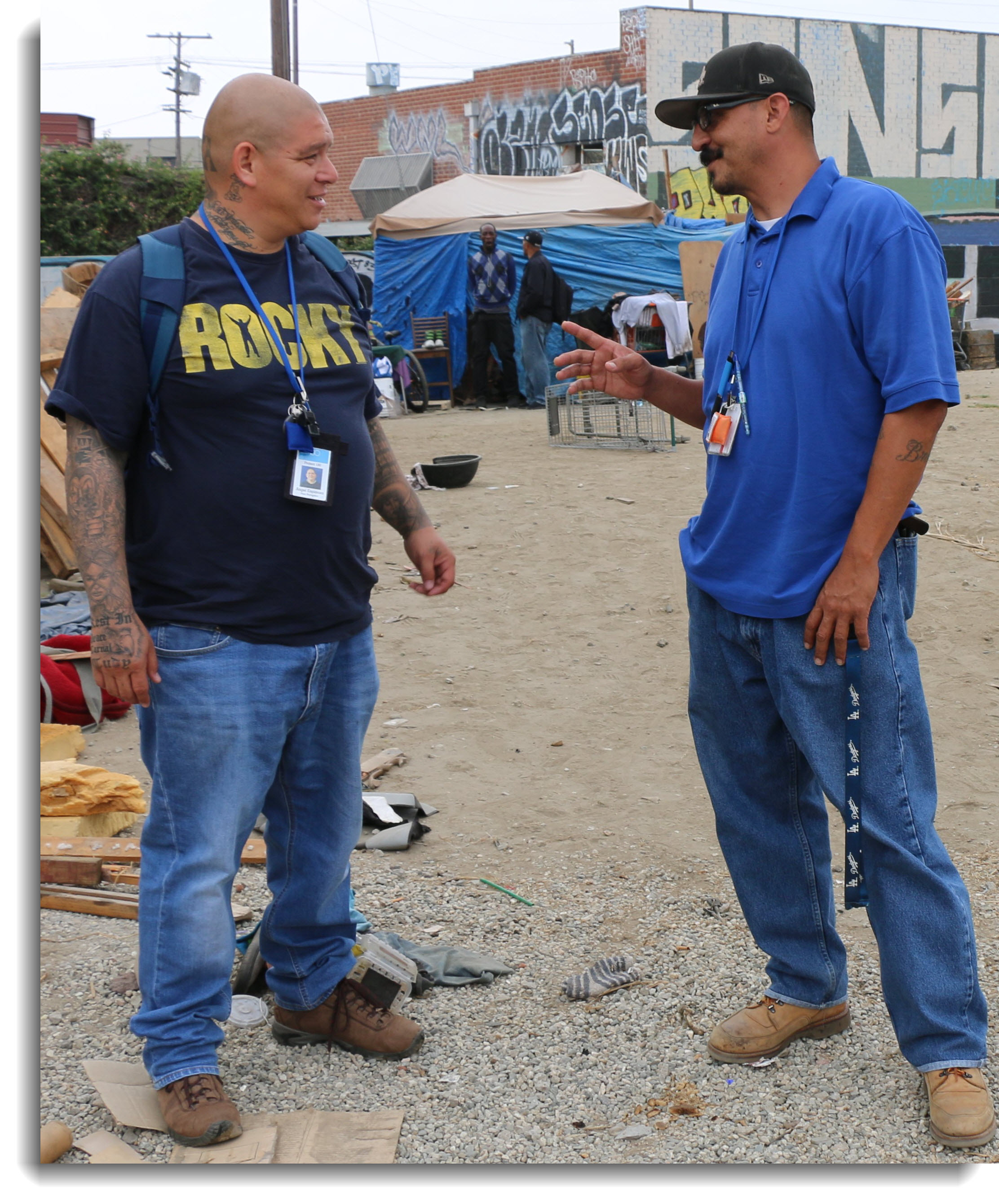
lower abdomen five years earlier, and on this day he was in desperate need of a new colostomy bag to replace the leaking one he had worn for way too long. After two decades on the streets, he surrenders to an offer for help. He signs a waiver, the first step in accepting services offered through LA DOOR. The waiver allows members of the team to coordinate medical care and treatment information to find appropriate solutions. “There comes a point where you’re at the bottom and it just takes that one person…” Rodriguez’ voice trails off as he remembers his own path back to recovery. He takes a breath and continues: “Someone said to me ‘Do you need help,’ and I said, ‘What do you got?’” Rodriguez tells the man he will return with new colostomy bags and starts making calls. Follow-through is the most important part of gaining trust, he explains. Solving the colostomy bag issue, a first for the team, will prove to be a daylong dilemma.
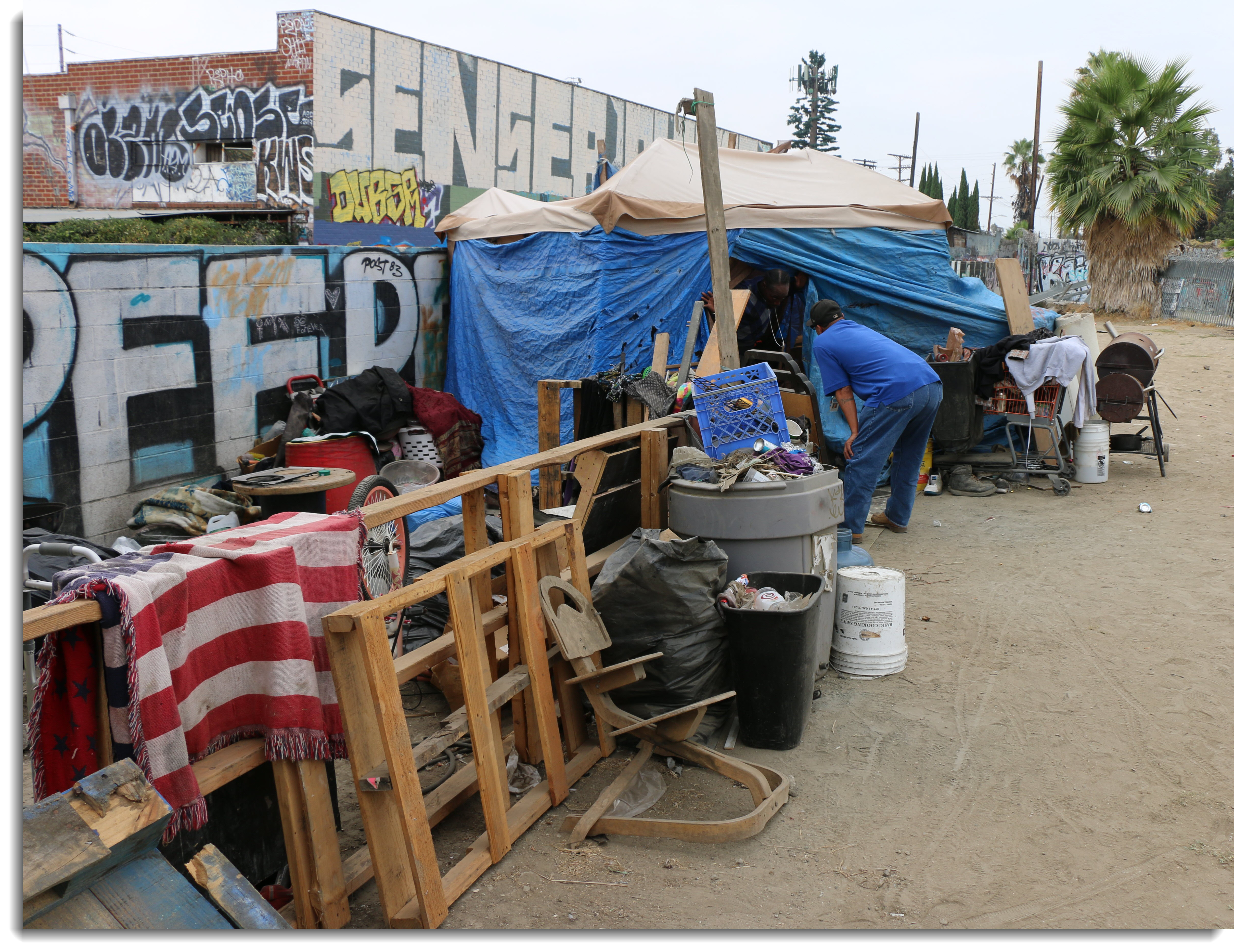
It will be a long road to helping this man and so many others with whom the LA DOOR team works. But the team members are not faint of heart. They draw from their own experiences to earn the trust of program participants. Most members of the LA team are from South Los Angeles and are personally invested in helping their fellow community members. When interviewing to work for LA DOOR, past experiences with addiction, incarceration, or homelessness are an asset. Team members take the long view with clients and know that every incremental step toward a healthier life brings participants out of their comfort zone and into something new.
The LA DOOR model is spearheaded by Los Angeles City Attorney Michael Feuer and designed by his deputy, Jamie Larson, to help people with drug addiction, mental health issues, and past incarceration ease into a more stable life with less contact with the criminal justice system. It is one of 23 proposals funded by three-year grants the BSCC administers with the first round of Prop 47 savings. Feuer is hopeful that providing outreach, treatment, health services and housing through LA DOOR can help prevent participants from returning to the criminal justice system with new misdemeanor drug and theft cases.
In LA, the City Attorney’s Office is responsible for prosecuting misdemeanors and infractions. The crimes prosecuted by the City Attorney’s Office include assault and battery, domestic violence and DUIs. But the City Attorney’s jurisdiction also includes so-called “quality of life” offenses like panhandling, trespassing, and drug possession, which is why the encampments are a focus. “If we can reduce a person’s
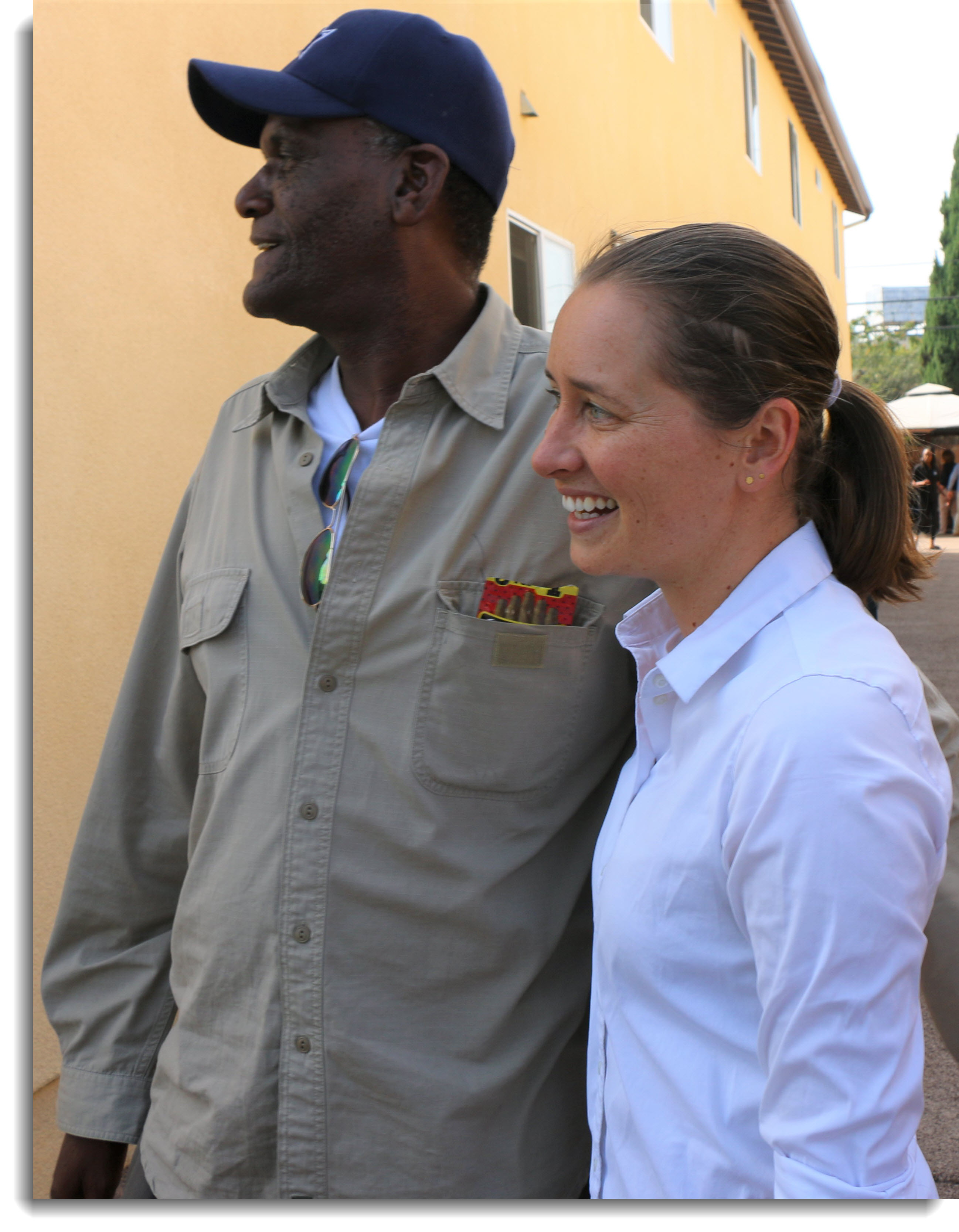
drug use and provide social services and some stability, we hope to also reduce the risk of that individual picking up a new criminal case,” says Larson. While the LA DOOR model is not exclusively focused on homeless people, most participants are homeless and substance dependent, a population that the grant required be served. Homelessness in Los Angeles County has surged 75 percent, to 53,000, in the past six years (https://www.lahsa.org/homeless-count) and more than 31,000 people are homeless within LA City Limits.
Participants can enter LA DOOR through one of two ways: accept outreach services offered by the mobile team; or the LAPD can refer people arrested on drug possession rather than booking them into custody, avoiding criminal charges. “We don’t want to file charges against drug addicted people who are willing to get help,” says Larson. “Whether the team connects with LA DOOR clients in the field or through a police referral, we are often able to make more progress through social services than through a courtroom.” LA DOOR’s $6 million grant goal is to help 500 people over three years, a miniscule fraction of the homeless population. But for those 500, it could mean everything. It is delicate work convincing participants to engage in services. Most distrust authority, are used to life without rules, and seemingly want to be left alone. “We have to navigate what they want versus what we think they want and need,” says Anna McClelland, the Program Director for the LA DOOR mobile team. “We are very mindful about where we insert ourselves into their lives.”
The day of the alley encounter began with Rodriguez and the team filling backpacks with the bottled water and hygiene kits that they used to initiate conversations. If a person agrees to even limited help, he or she is asked to sign a waiver, which often takes several visits to negotiate since many are suspicious about any document that requires a true name and date of birth. Then the team can begin to assess needs – maybe a state ID card or exploring whether the individual is interested in reducing substance use.

The team has learned that simply getting someone to agree to go to a mobile shower is a step in the right direction. “We don’t expect them to change overnight. It’s a process. They are used to people turning their backs on them.” Rodriguez says. “Just showing us up consistently and on schedule is often more than they are getting from anywhere else,” Larson adds. Though other agencies work with homeless people in encampments, the structure of the LA DOOR model ensures that the team is consistently working five locations, one each day of the week. With the City Attorney’s Office directing the project, participants are eligible for legal support that is difficult to come by. The City Attorney’s Office connects program participants with the its HEART program so that participants can get outstanding tickets and related warrants forgiven. Soon, the City Attorney’s Office hopes that collaboration with the Public Defender’s Office can help LA DOOR participants address old criminal convictions that can be reduced or expunged.

As the day goes on, members of the LA DOOR team share that they are particularly worried about a frail woman named Cathy who is 50 going on 70. Cathy lives under a tarp in a parking lot next to railroad tracks, one of the few co-ed homeless encampments. They have been working with her for five months, getting her hospital treatment when she was too weak to walk, taking water to her and checking on her well-being. She suffers from chronic alcoholism, and many of her neighbors are on meth and crack. Cathy is in a dangerous position in this encampment, but getting her into LA DOOR housing has been a difficult sell. She has been placed twice, but has left and returned to camp. In the days following she’ll be placed in housing again. Who knows how long she will stay this time? The team won’t quit trying. “I don’t think we understand how many rules we follow in a day that we don’t even think about,” says McClelland. “Cathy does what she wants to do every day.” “Sometimes being placed in housing can feel like a favor or a debt that you can’t pay,” Larson adds. As team members talk to Cathy, Sharleen McCloud, the therapist, is engaging a tall young man with dreadlocks who is talking nonsense while seemingly flirting with her. McCloud says later it’s drug-induced psychosis and personality disorder, but she doesn’t blow him off. It’s not the first time they’ve spoken, and each time she attempts to get him to agree to participate in talk therapy.
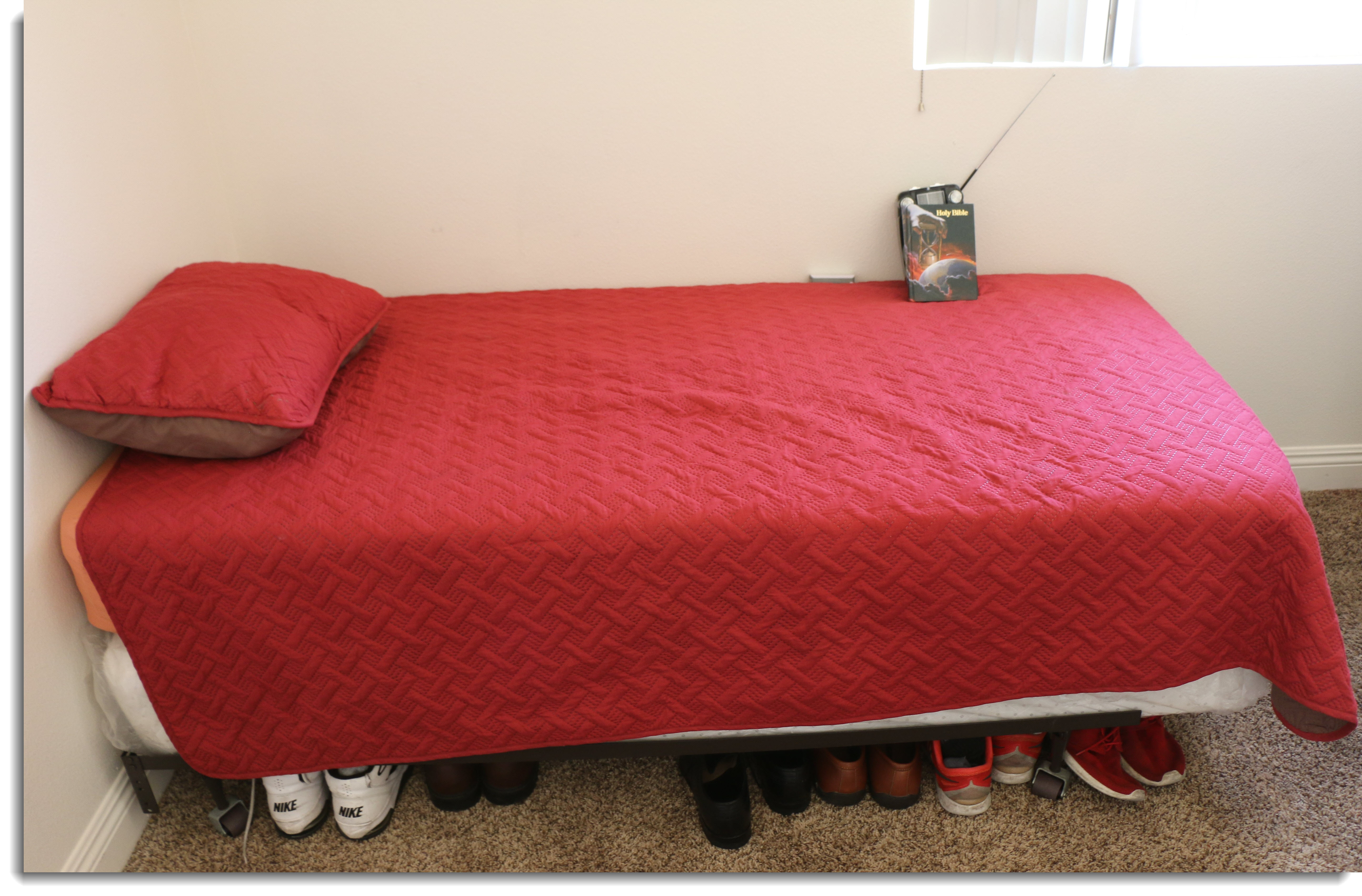
“All you have to do is commit,” she tells him with a smile. “I’ll come here to talk to you. You don’t even have to leave.” He says he will think about it.
For those who are ready to leave street life, the program has 29 transitional housing beds available. The City Attorney’s Office has contracted with the West Angeles CDC, the nonprofit arm of West Angeles Church, to provide housing at two renovated duplexes in south LA through Ms. Hazel’s House. Participants are welcomed into housing as soon as they are ready to leave the streets, even though the team knows that there is a high risk of relapse and turnover.
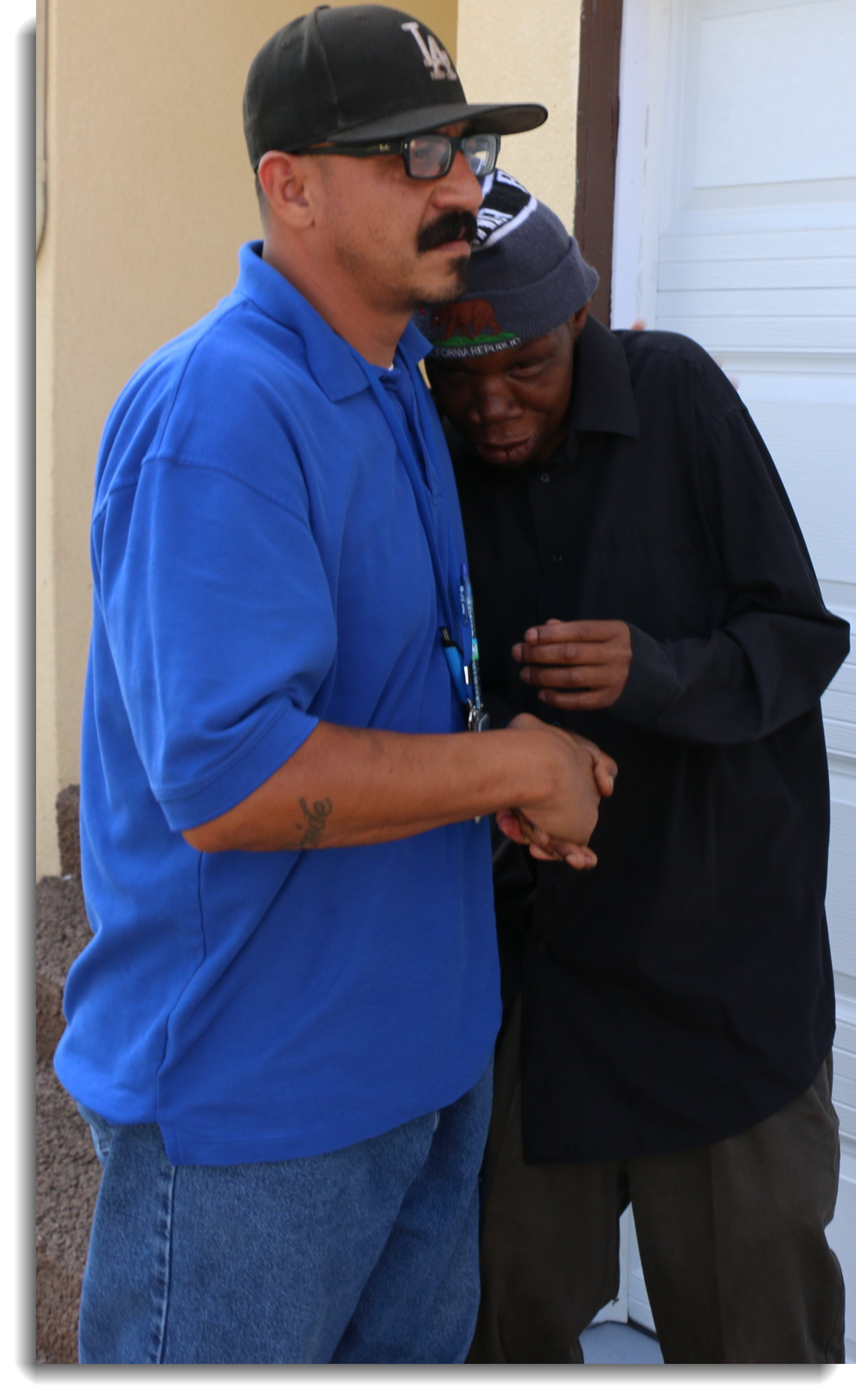
Ms. Hazel’s House provides safe and secure temporary home, and West Angeles CDC steps in to provide additional on-site services, including case management, financial wellness, and transportation to help LA DOOR participants keep up with their social services appointments once they are in housing. “When they first come here they are broken,” said Karen Downard, Director of Social Services for West Angeles CDC. “Most have been on the streets 10 or 20 years. One man had never felt carpet under his feet.”
At Ms. Hazel’s House, participants learn how to prepare healthy meals and other life skills, such as good personal hygiene and keeping their clothes and room neat and clean. They participate in group therapy sessions. Accomplishments are marked off, like children do with chores. Sometimes it takes months for the residents to feel secure enough to abandon ownership of their old tents, and even longer to bunk comfortably in the same room with others without flashing back to time spent in jail or prison. Those who stick it out are appreciative. When the LA DOOR team pays a visit, they are genuinely happy to see the people who started them down a new path. “I’ve been here four months. It’s a good program,” one resident said. “I came out of a tent. They found me. I was resistant at first, but they got me help. Now the people here try to get you in a position to do this on your own. It’s hard to get used to having rules, but once you do, it’s way better than a tent.” The team is elated to see the progress of the participants placed at Ms. Hazel’s House. They exchange hugs and handshakes with the men with whom they built a rapport during months of bottled water and granola bar exchanges. But never far from the back of their minds is Cathy, the frail alcoholic. And the guy whose leaking colostomy bag is a danger to both himself and public health.
Later in the day Jose Rodriguez circles back to the filthy alley where the man sleeps. Colostomy bags are tricky, and sizes are determined by the opening of the stoma. Jose really wants to take the man to the hospital to head off any other health issues that likely are lingering.
The man hesitates, not wanting to leave his meager belongings behind, wary of what else might be in store. Finally, a deal is struck. He will go to the hospital, if Krystal Simpson, a trusted member of the team and Licensed Vocational Nurse will go with him, so he’s not left alone with strangers.
And that, the team hopes, is the man’s first step toward a better life.
The next morning, they will start again.

